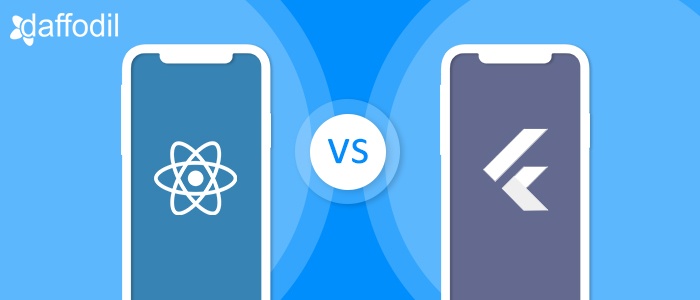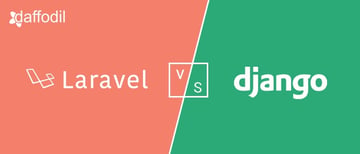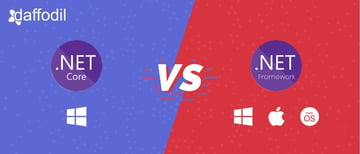
By 2022, consumers are projected to download over 258.2 billion apps to their connected devices, worldwide. | According to Statista
The smartphone market has a duopoly of Android and iOS devices. Thus, to reach out to a wider user-base through mobile apps, it is imperative for businesses to have their apps built for both the platforms. To respond to this app development requirement, cross platform app technologies are becoming more prominent.
With cross platform development frameworks like React Native and Flutter, businesses get the benefit of faster-go to market, reduced cost, and code-reusability. The later segment discusses the benefits of building cross platform mobile apps with React Native and Flutter, along with comparison between the two to know which one offers better app development tools, architecture, stability, and performance.
Why Cross Platform Apps Using React Native or Flutter?
Mobile app development frameworks like React Native and Flutter are known for building native interfaces on iOS and Android. Mobile apps built on these technologies render using host platform’s standard rendering APIs. This distinguishes the app built with React Native or Flutter with cross platform apps built using HTML frameworks like Cordova or Ionic.
|
Cross Platform Apps Built with HTML Frameworks |
Cross Platform Apps Built with React Native/Flutter |
|
With HTML frameworks, the app uses a combination of HTML, CSS, and Javascript and typically renders webviews. The resultant apps don't have access to the host platform native UI element and thus offer a degraded look & feel than native apps. While this approach to building cross platform apps for Android and iOS works, it also comes with drawbacks, especially performance. |
React Native or Flutter translates the markup into real, native UI elements, leveraging existing means of rendering views on any platform (Android or iOS). Since these frameworks work separately from main UI thread, they do not affect performance of the app. Since the app will render using real mobile UI components, the look & feel of the app will be similar to that of native apps, and it will not be a webview. |
React Native VS Flutter- which technology for building native mobile apps works best for your business app? Here is an overview of both the frameworks, along with a comparison that will help you to make the a competent choice between the two.
React Native (By Facebook)
React Native is a javascript framework for building native mobile apps. The framework is a consequence of React- a JS library for building web user interface, introduced by Facebook in 2009. React Native got huge acceptance amongst developers and is ranked as one of the popular app development frameworks for three major reasons:
1. Reusable Components: A piece of UI is a component in React Native. A mobile app built with React Native consists of isolated, independent, and reusable components, which are then composed to build a complex, comprehensive UI.
2. Virtual DOM: In React, every DOM object has a Virtual DOM object, which is a lightweight representation of DOM in memory. Whenever a component changes its state, a new React element is created. This element is then discovered for any changes and updates the real DOM to keep everything in sync.
3. Declarative Programming: React Native follows declarative programming style, wherein developers can do more with less lines of code. If the UI component is programmed declaratively, it only needs to handle how the UI should look in a specific state, which makes it a relevant approach for complex component development.
React Native a competent and most wanted framework amongst developers community, according to StackOverflow Survey 2018. The framework has 1,752 contributors on Github and its popularity can be estimated from thousands of beautiful apps built using React Native.
Flutter (By Google)
Flutter is a mobile app development framework by Google, which was introduced at I/O Conference 2017. The idea of app development with Flutter revolves around widgets. The UI of the app is built by combining different widgets, each of which defines a structural element (menu or button), stylistic element (color scheme or font color), layout aspect (like padding) etc. Flutter has gained popularity and acceptance amongst developers’ community for three of the following reasons:
1. Hot Reload: One of the most lauded features of Flutter is Hot Reload that allow developers to instantly preview the code changes in the emulator, simulators, or the hardware. The code changes are loaded faster, while the app is running without any need to restart. This not just helps in building app UI faster, but also simplify bug fixing process.
2. UI Elements with Widgets: The Flutter SDK has amazing built in Material and Cupertino widgets. Material design widgets are designed to look like Android apps and Cupertino for iOS. Along with this, developers have the option to build custom widgets as well.
3. No OEM Reliance: Flutter uses neither WebView nor the OEM widgets that are shipped with the device. Instead, it uses its own high-performance rendering engine to draw widgets.
Flutter is a modern React-style framework, integrated with APIs for unit and integration tests, command line tools for building, compiling, and testing apps. Flutter framework is inspired by React and therefore is considered as a biggest competitor of React Native for mobile app development.
React Native VS Flutter : Comparison
a) React Native VS Flutter: Language Stack
React Native (Javascript): React Native uses javascript and React for building mobile apps. It uses JavaScript and XML-esque markup, known as JSX to develop mobile app interface.
Flutter (Dart): Mobile apps in Flutter are built using Dart, an object-oriented, class defined language, developed by Google. Dart uses a C-style syntax that transcompiles optionally into JavaScript.
According to StackOverflow, Javascript is the most popular programming language amongst developers’ community. Javascript was introduced in 1995, while Dart was introduced by Google in 2011. This makes a huge difference in terms of community, acceptance, and maturity of the languages when comparing React Native VS Flutter.
b) React Native VS Flutter: Development Time
For developers to accelerate the app development cycle, both Flutter and React Native offer Hot Loading. Herein, instead of recompiling the app after any changes in the code, the updations in the app can be viewed on emulators. So, all those minutes that are being spent on waiting for app rebuilding to view the changes can be utilized more productively by developers, and also boost speed of development.
Moreover, since both frameworks offer the advantage of cross-platform native app development, they help in gaining momentum over development for multiple mobile platforms.
c) React Native VS Flutter: Blocks of UI
Both React Native and Flutter uses Reactive-Style Views. While React uses reusable components to build the app, Flutter has built-in widgets that are combined to build an app. While React Native transpiles to native widgets, Flutter compiles all the way to native code.
Flutter has proprietary set of widgets that can be used and customized for building UI blocks. Here, React Native comes with an advantage over Flutter. React Native combines with third party component libraries and UI toolkits that saves time in building variety of UI components faster for an app. So, React Native leads the UI block building game.
d) React Native VS Flutter: Performance
React Native architecture consists of the Javascript architecture and native components. For React Native apps (written in Javascript) to interact with native components like audio, OEM widgets, GPS etc., a JS bridge is required. Javascript bridging helps to convert JS variables into natives ones and this conversion creates an additional task, slowing down performance of React Native. With Flutter, there is no bridge between native components and programming language (as the framework is backed by C++ engine), the performance is comparatively faster than React Native.
e) React Native VS Flutter: Clientele
Herein, React Native emerge out as a clear winner for the fact that it was introduced to developers’ community, earlier than Flutter. React Native was launched with a novel concept and framework for mobile app development, which gave it immense popularity and is one of the accepted technologies. The client portfolio of React Native includes some of the established names, including Tesla, Skype, Walmart, AirBnB.
Flutter made its entry to the app development industry an year ago and is less mature as compared to React Native. However, Flutter still have some amazing businesses rusting it for their mobile apps, which include names like Alibaba, Google Ads, Hamilton Musical, and more. But in terms of number, React Native comes out to be the winner with a huge clientele, including startups and fortune 500 companies.
f) React Native VS Flutter: Stability
React Native have strong roots in developers’ community and its continuous releases makes it a stable app development framework. Flutter on the hand is growing strong with its releases, but has a smaller community support, compared to React Native. Therefore, in terms of stability and community support between the two, React Native wins.
ALSO READ: Xamarin VS React Native for Cross Platform App Development
Conclusion: React Native VS Flutter
For building cross platform native apps, both React Native and Flutter offer tools, features, libraries to build a performance-oriented mobile app. However, depending upon category of app, it's scalability, and maintenance preferences, React Native or Flutter can be chosen for your next app development project.




